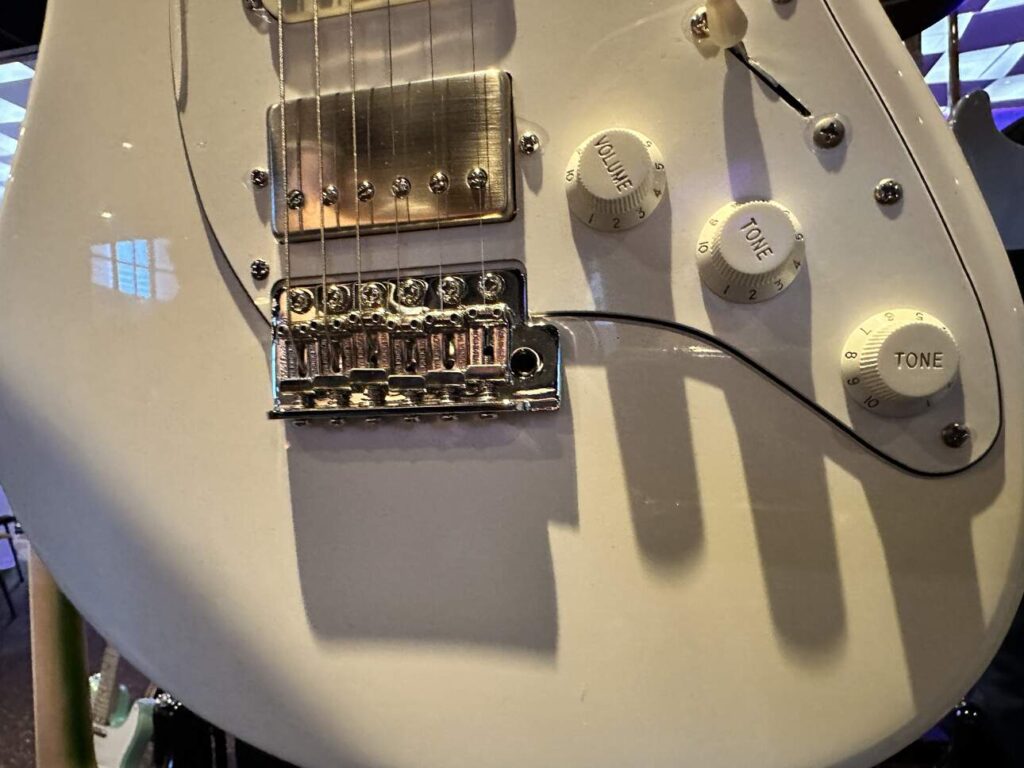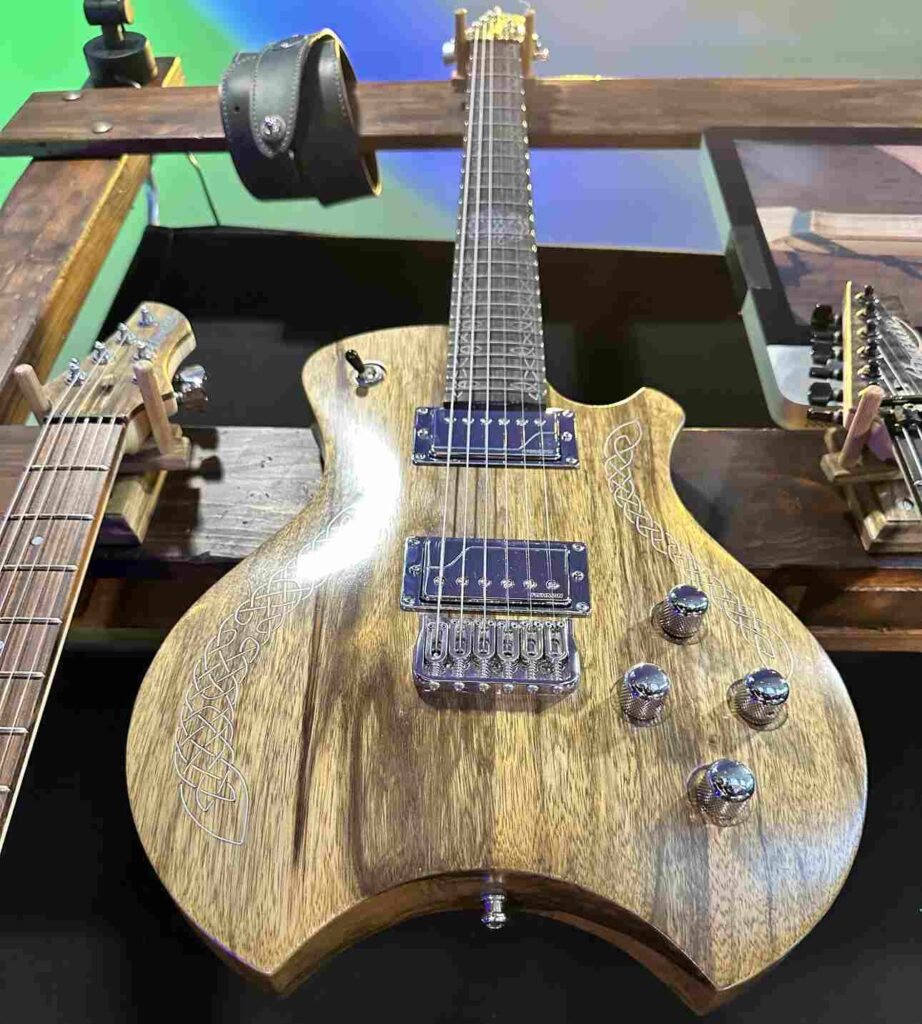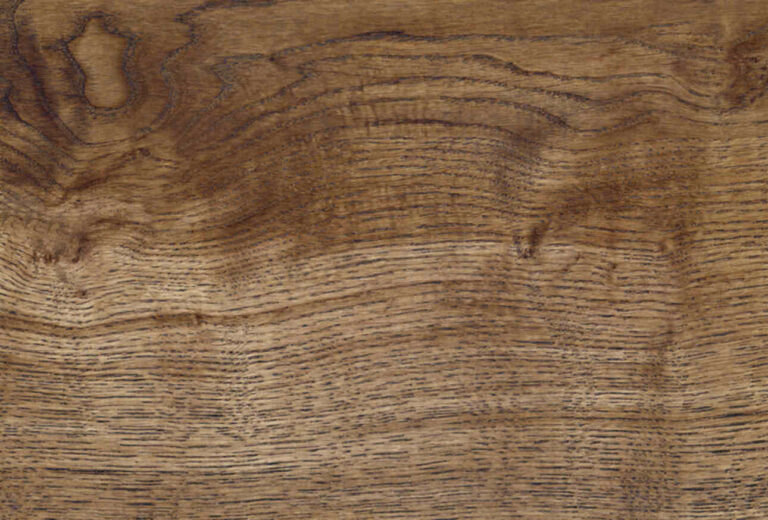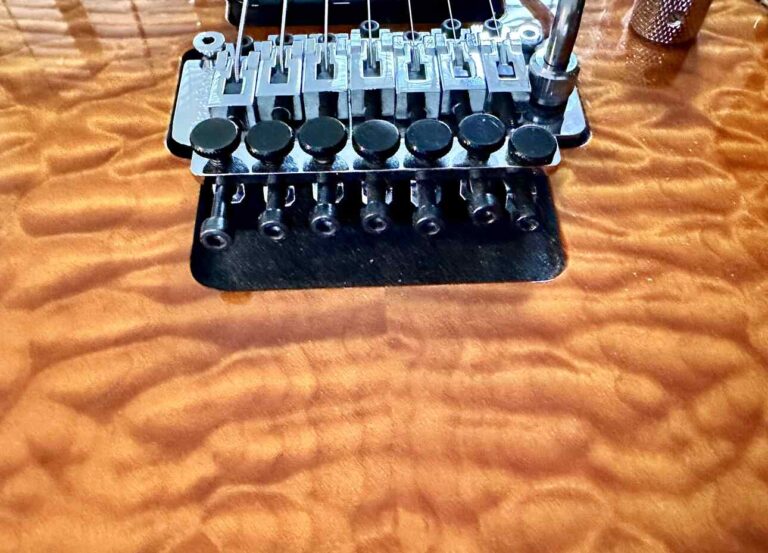What Are the Different Types of Guitar Finishes? A Comprehensive Guide

The finish on your guitar isn’t just about looks. It protects your axe from wear and tear and affects how the guitar sounds and feels. There are many types of guitar finishes, each with its traits. In this post, you’ll read all about them.
Nitrocellulose lacquer gives a classic look and warm tone, but polyurethane is tougher and more modern.
Each type of finish has its pros and cons. Some are more durable, while others need more care.
Some finishes need more upkeep to stay nice. Others are better for frequent use and travel. Knowing these differences helps you choose a guitar that fits your style and needs.
Key Takeaways
- Protection and Influence: The finish of a guitar protects the wood and affects both the guitar’s look and sound;
- Variety in Finishes: Different finishes vary in durability, maintenance needs, and impact on tone;
- Choosing the Right Finish: Choosing the right finish means considering both how it looks and how it will hold up with use and care.
Understanding Guitar Finishes
Guitar finishes protect your instrument, enhance its look, and can affect its tone. Your choice impacts your guitar’s appearance and function.
Significance of Guitar Finish
Your guitar’s finish does more than look good; it protects the wood from humidity and damage. Different finishes, like polyurethane and polyester, offer varying levels of durability. They can affect the weight and tone of the guitar.
An oil and wax finish provides a natural look and feel, letting the wood grain shine through. Plus, the feel of the finish can impact your playing experience. Some finishes feel smoother. It might influence your playing style.
Different finishes, like polyurethane and polyester, offer varying levels of durability
Types of Guitar Finishes
Solid Color Finish
Solid-color finishes conceal the wood grain, giving the guitar a uniform color. These finishes are common on electric guitars and range from subtle to vibrant shades. Polyurethane or polyester is often used as the sealing agent for these finishes.

Translucent Finish
Translucent finishes let the natural wood grain show through. These are usually applied with tinted nitrocellulose lacquer or colored polyurethane. They offer a glimpse of the wood beneath for a more natural appearance.

Nitrocellulose Lacquer
Nitrocellulose lacquer finishes are traditional and known for their thinner application. They allow the wood to ‘breathe’ and potentially enhance your guitar’s tonal qualities as it ages.
But polyurethane finishes may be less resistant to scratches and environmental factors.

Gloss Finish
The gloss finish is all about a high shine and smooth surface. It can be achieved with materials like nitrocellulose, polyurethane, or polyester. These materials are valued for their mirror-like appearance.

Matte Finish
A matte finish may be ideal for a non-reflective, understated look. This finish lacks the shine of gloss and offers a more raw, textured aesthetic. It can be applied using various materials, including polyurethane.
Satin Finish
A satin finish balances matte and gloss, offering a subtle sheen without the high shine. Compared to gloss finishes, it’s smoother to the touch and less prone to showing fingerprints. This makes maintenance simpler.
Polyester Finish
The polyester finish is a plastic-based option. It became popular in the 1970s for its durability. It is generally thicker than polyurethane and protects against wear and tear.
Polyurethane Finish
Polyurethane finishes are a popular modern choice. This is due to their resistance to scratches and environmental damage. Brands like Fender use thinner satin and a thicker gloss polyurethanes.
Shellac Finish
Shellac finishes are less common today but can be found in vintage or classical guitars. They offer a warm, soft luster and are often applied by hand. But they are not as protective as modern synthetic finishes.
Oil Finish
If you prefer a natural feel, an oil finish might be appealing. Oil finishes penetrate the wood. They enhance the grain and protect without hiding the wood’s natural beauty. They can also offer a more comfortable grip.
Acrylic Lacquer Finish
Acrylic lacquer finishes are like nitrocellulose lacquers but use different materials. These offer quicker drying times. They also have a reduced environmental impact. They also tend to be more durable than traditional lacquer finishes.
Each finish has its own characteristics and maintenance needs.
Here’s a comprehensive table comparing the characteristics of each finish:
| Finish Type | Appearance | Durability | Tonal Impact | Dry Method |
|---|---|---|---|---|
| Solid Color Finish | Uniform, thick | Highly durable | Minimal resonance | Solvent evaporation or curing |
| Translucent Finish | Wood grain visible | Moderate to high | Varies | Solvent evaporation |
| Nitrocellulose Lacquer | Ages gracefully | Moderate, scratches easily | Resonant | Solvent evaporation |
| Gloss Finish | Shiny, reflective | High | Varies | Depends on the base finish (poly, nitro, etc.) |
| Matte Finish | Non-reflective | Moderate | Varies | Depends on the base finish |
| Satin Finish | Soft sheen, less shine | Moderate to high | Varies | Depends on the base finish |
| Polyester | Thick, glossy | Very high | Less resonant | Curing |
| Polyurethane | Variable gloss levels | High | Less resonant | Water or urethane-based drying |
| Shellac | Natural, thin | Less durable | Transparent tone | Solvent evaporation |
| Oil Finish | Natural, enhances wood | Low, easy to touch-up | Varies | Absorption into wood |
| Acrylic Lacquer Finish | Lighter, smooth | Less durable than poly | More resonant | Solvent evaporation |
Each finish has strengths and drawbacks, so your choice will depend on what’s most important to you in a guitar.
The Pros and Cons of Guitar Finishes
Each type of finish impacts not only the aesthetics of your axe but also its tone and durability.
| Finish Type | Pros | Cons |
|---|---|---|
| Solid Color | Uniform look; hides imperfections. | Can be thick; potentially dampens resonance. |
| Translucent | Showcases wood grain; unique visual depth. | Flaws in wood can be visible; may yellow over time. |
| Nitrocellulose | Classic finish; ages well with playing. | Susceptible to scratches; sensitive to temperature. |
| Gloss | Offers a high shine; enhances color vibrancy. | Shows fingerprints; can crack over time. |
| Matte | Minimal reflection; modern appearance. | Can be difficult to clean; wears unevenly. |
| Satin | Soft sheen; less prone to fingerprints. | Can get shiny with play; less protection than gloss. |
| Polyester | Very durable; high resistance to scratching. | Can feel plastic-like; less repairable than lacquer. |
| Polyurethane | Durable; less toxic than nitrocellulose lacquer. | Thicker application; may dampen the guitar’s tone. |
| Shellac | Natural; gives a warm vintage look. | Delicate; alcohol-soluble (prone to damage from spills). |
| Oil | Enhances natural beauty; easy to apply and maintain. | Not as protective as other finishes; requires reapplication. |
| Acrylic Lacquer | Fast-drying; clear finish. | Not as durable as other synthetics; less water-resistant. |
Impact of Finish on Guitar Tone
Acoustic Resonance Considerations
The finish on acoustic guitars can affect the wood’s vibration and influence the resonance. A gloss finish might look stunning, but it is generally thicker. It can also potentially dampen the guitar’s natural vibrations.
But thinner finishes are said to allow better resonance. They preserve the natural wood grain qualities.
When considering sound quality, a lighter finish like oil or shellac might better preserve these qualities.
Electric Guitar Sound Impact
The finish is less important for electric guitars because of their electronic pickups. Still, the physical vibrations affect the tone.
Some guitarists believe that the type of finish can subtly change the sound. Since an electric guitar also resonates, the finish can alter the body’s vibration.
Finish Maintenance and Care
Cleaning and Polishing
Regular cleaning and polishing are essential. To avoid damage to a guitar with a glossy finish, use a soft, lint-free cloth and a polish designed for guitars.
Products for cars or furniture can contain harsh chemicals. They may harm your guitar’s finish.
When cleaning, wipe in a circular motion to remove fingerprints and dust. When polishing, apply a small amount of guitar polish to the cloth, not directly onto the guitar.
Too much moisture can damage the wood and finish, especially if it seeps into cracks or crevices. Avoid using polish altogether for satin finishes.
These are less shiny but still need care. Wipe them down with a damp cloth, then dry them as soon as possible.
Choosing the Right Finish
Aesthetic Preferences
Your guitar’s look reflects your style and the choice of finish can alter its appearance. If you prefer the natural beauty of the wood grain to shine through, an oil or shellac-based finish might suit your taste.
These finishes enhance the grain and offer a more organic feel. This is perfect if you value a traditional, earthy vibe. But a polyurethane or nitrocellulose finish can give your guitar that polished shine if you prefer a flashy, smooth, and glossy look.
Durability Requirements
Though admired for its vintage appeal and ability to age nicely, polyurethane is less robust than nitrocellulose. Expect heavy use and potential wear and tear.
A polyurethane finish may be the wiser choice. It offers a tougher barrier against nicks and scratches.
Frequently Asked Questions
Can wax finishes be used on any guitar?
Yes, wax finishes can be applied to nearly any type of guitar. Whether you have an acoustic or electric, wax can provide a natural feel and a matte look. But it’s less durable than other finishes and may need more frequent maintenance.
What type of clear coat is best for a guitar body?
The best clear coat for a guitar body often depends on what you’re looking for in aesthetics and tone. Polyurethane offers excellent protection and durability.
Nitrocellulose lacquer is favored for its thinner application and quicker wear. This makes it a popular choice for vintage aesthetics.
What kind of varnish is suitable for a guitar?
A durable and flexible varnish works well for guitars. You can think of an alkyd or polyurethane varnish. These provide a robust protective layer while allowing the natural wood to resonate.
Additionally, many players prefer a varnish that enhances the grain of the wood. It offers both visual appeal and protection.






